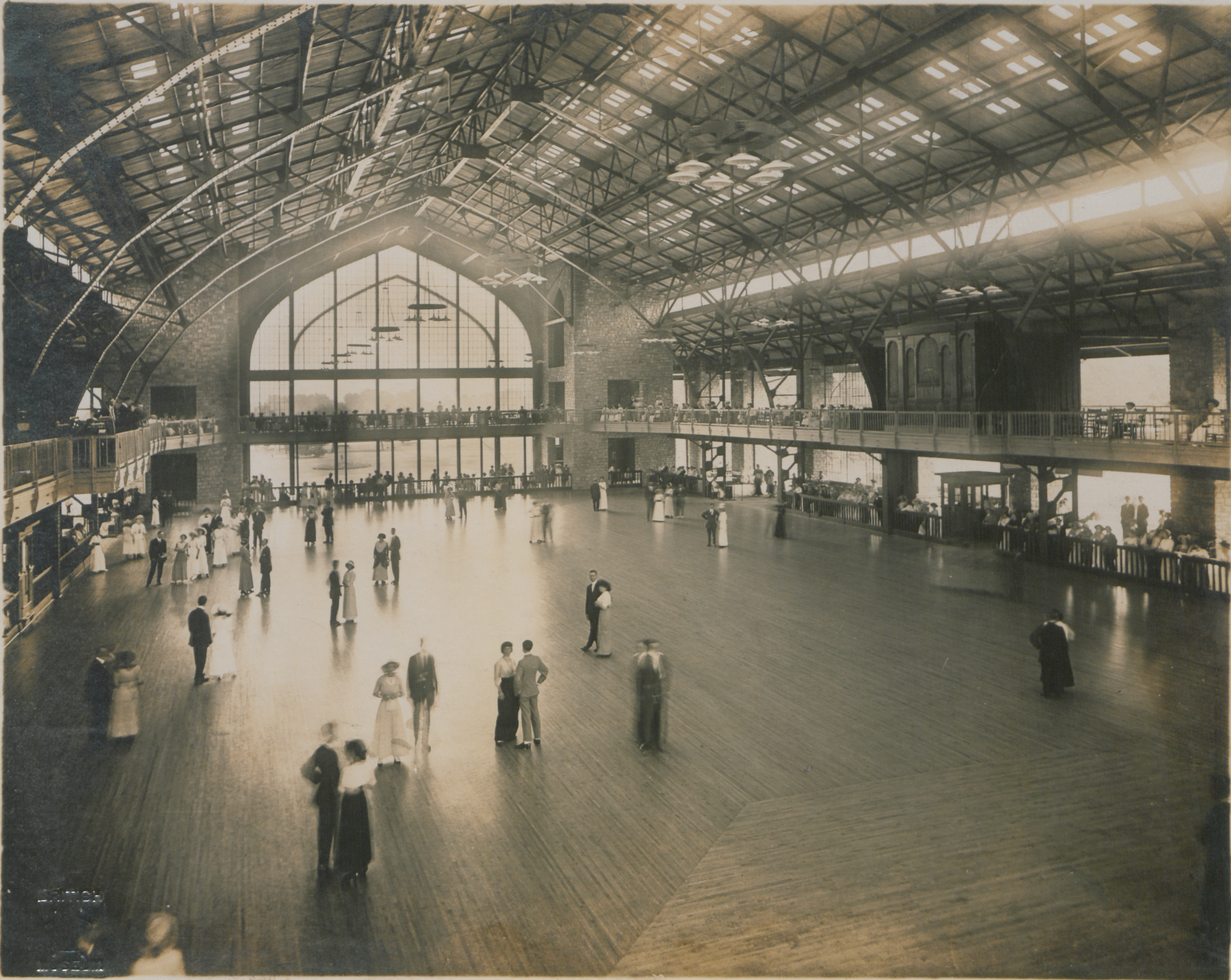A Look Back in Time: Ontario's Bob-Lo Island in 1914
Now in ruins, Bob-Lo Island was extraordinary, especially the Dance Hall, which could hold up to 5,000 people.

At one point, every city of any consequence — including those along Lake Erie — had its own amusement park. Some—like Cedar Point in Sandusky, Ohio—still exist. Others, like Crystal Beach in Ontario and Euclid Beach in Cleveland, are just memories.
The birch and beech trees found on a 272-acre island in the Detroit River between Detroit and Ontario led French settlers to name it Bois Blanc (literally “white woods”) Island, corrupted in English to Bob-Lo Island. In 1898, the Detroit, Windsor and Belle Isle Ferry Co. opened a small recreation area on the island accessible by their ferries.
By 1910, the park had added a carousel and a dance hall. Three years later, Henry Ford himself commissioned a new, 35,000-square-foot dance hall, with the second-largest dance floor in the world and an orchestrion, a self-contained music machine that cost $4,716 — a hefty sum, considering Ford was selling Model Ts at the time for $440. (The restored machine sold at auction in 2012 for nearly $1.1 million.)
Soon, thousands flocked to the island, but the postwar years were unkind. Although millions were invested in Bob-Lo Island to make it into an amusement park to rival anything else in the country, it was besieged by lawsuits (one, in 1949, went all the way to the U.S. Supreme Court and served as a landmark case in the fight for desegregation). Some rides caused injuries, including a malfunction on the Bug that killed one person and hurt eight more in 1965.
Still, hundreds of thousands of people attended yearly well into the 1980s. But frequent changes in ownership, governmental red tape, declining attendance and regular fights eventually took their toll, and the park closed after the 1993 season.
Recently, Bob-Lo Island has been redeveloped as a community of luxury homes and condominiums, reached from the mainland in Amherstburg, Ontario, via a 4-minute ferry ride. A few remnants from the park’s glory days remain, but rust, weeds and ti
The birch and beech trees found on a 272-acre island in the Detroit River between Detroit and Ontario led French settlers to name it Bois Blanc (literally “white woods”) Island, corrupted in English to Bob-Lo Island. In 1898, the Detroit, Windsor and Belle Isle Ferry Co. opened a small recreation area on the island accessible by their ferries.
By 1910, the park had added a carousel and a dance hall. Three years later, Henry Ford himself commissioned a new, 35,000-square-foot dance hall, with the second-largest dance floor in the world and an orchestrion, a self-contained music machine that cost $4,716 — a hefty sum, considering Ford was selling Model Ts at the time for $440. (The restored machine sold at auction in 2012 for nearly $1.1 million.)
Soon, thousands flocked to the island, but the postwar years were unkind. Although millions were invested in Bob-Lo Island to make it into an amusement park to rival anything else in the country, it was besieged by lawsuits (one, in 1949, went all the way to the U.S. Supreme Court and served as a landmark case in the fight for desegregation). Some rides caused injuries, including a malfunction on the Bug that killed one person and hurt eight more in 1965.
Still, hundreds of thousands of people attended yearly well into the 1980s. But frequent changes in ownership, governmental red tape, declining attendance and regular fights eventually took their toll, and the park closed after the 1993 season.
Recently, Bob-Lo Island has been redeveloped as a community of luxury homes and condominiums, reached from the mainland in Amherstburg, Ontario, via a 4-minute ferry ride. A few remnants from the park’s glory days remain, but rust, weeds and ti
Story:
Vince Guerrieri
2019 July/August
